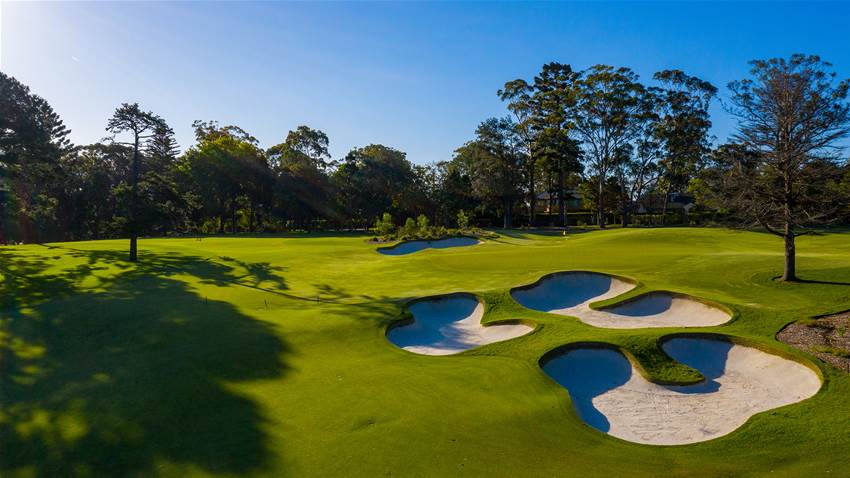By the late 1800s the once dry, rocky and inhospitable scrub of Sydney’s North Shore had been settled with farms, orchards and timber mills and was home to a growing population who found time for the occasional leisure activity in the period of relative prosperity before World War I.
And so, at the turn of the century some enterprising enthusiasts secured a parcel of land around the burgeoning settlement and cleared it as a field on which to enjoy the emerging sport of golf, thus forming what would become Killara Golf Club.
From those early dusty paddocks would emerge what we now characterise as Sydney’s distinct form of parkland golf; A type of golf played across ridgelines and rocky escarpments, through valleys with dark soils and old sandstone hills covered in eucalypts, exotic specimens and lush warm-climate grasses.
With its recent remodelling by architect Harley Kruse, Killara now presents a more evolved and sustainable expression of Sydney golf in which parkland is giving way to native woodland and bush demonstrating a more biodiverse approach for other clubs on Sydney’s leafy North Shore to follow.
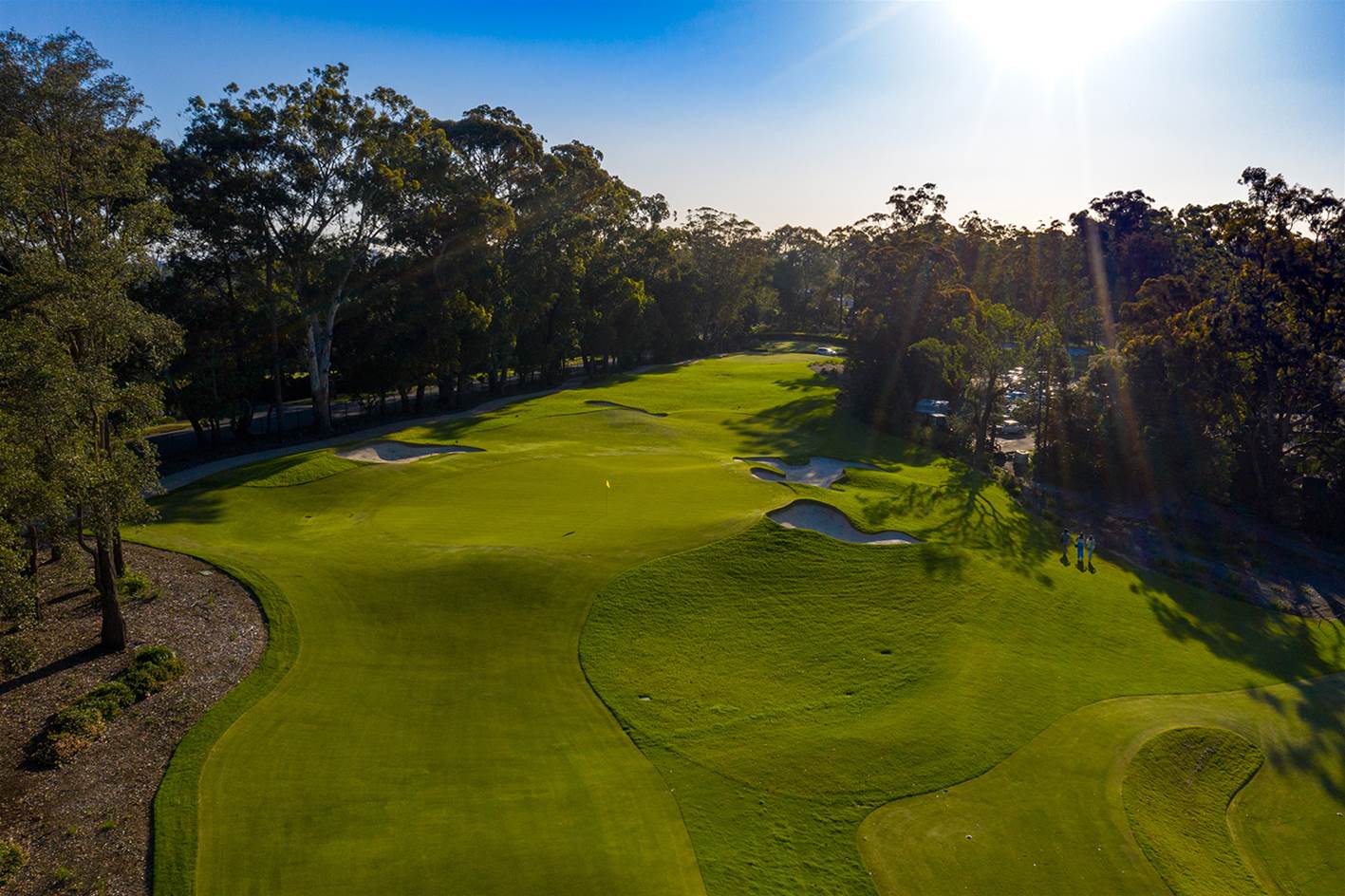
Killara formed in 1901 but was originally known as the Lindfield Golf & Recreation Club. It was later changed to Killara Golf Club, in part because visitors would mistakenly alight the train at Lindfield when Killara station was in fact closer to the course. The old name was appropriate in one sense: Killara is much more than just a golf course – with tennis, bowls, squash, snooker and even bridge it is a multi-sport recreation facility only surpassed by Royal Sydney Golf Club and unique among Sydney’s North Shore clubs.
"The course has been given a more flattering profile and a richly toned golf experience that highlights the dramatic landforms of the North Shore’s golf terrain ..." – Adrian Logue.
There was an abundance of land in those early days and Killara gradually expanded from nine rudimentary holes on a rough clearing to its present day 6,100m 18-hole par 72 extending into the peaceful surrounding suburbia across three “paddocks”.
At just 50 hectares it is, by most standards, a small property but with architect Kruse’s changes it may now have evolved into what Alister MacKenzie describes as “finality” where all the greens, tees and playing corridors can be found in their optimal position giving those elements a sense of permanence that suggests they were always meant to be there.
The course prior to Kruse’s appointment was largely a remnant of the 1965 design by prominent Sydney-based architect Prosper Ellis whose name is attached to numerous other courses in the area. The club also engaged famous English architect Commander John Harris to validate Ellis’ plans and add various embellishments from his vast experience.
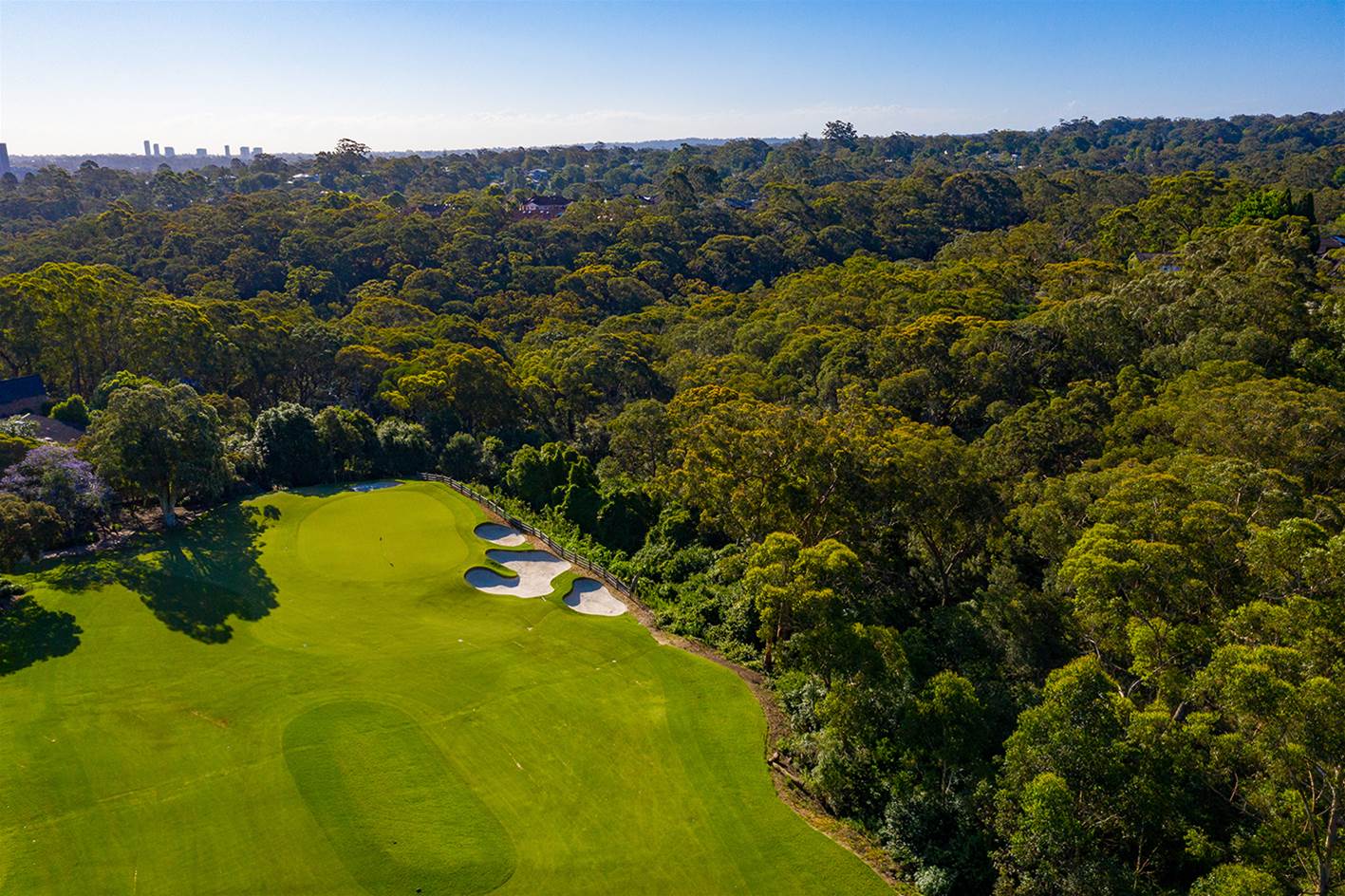
Coinciding with the creation of the Ellis/Harris design was a well-intentioned tree-planting program that ultimately did more than Ellis or Harris ever could to define Killara’s character as a tree-lined parkland course and would shape the agronomy of the course in even more permanent ways.
In the period after World War II, Killara was considered a winter course with a mix of couch, Parramatta grass and paspalum that struggled to thrive from a lack of water in the summer months leaving the course firm, dusty and unplayable.
The grass continued to suffer as the tree canopy expanded prompting the club to invest in securing a water supply and a formal irrigation system. But with better conditions for turf growth came another double-edged sword as kikuyu began to invade and choke out the sportier couch playing surfaces. Various chemical and labour-based solutions failed to hold it back and the club eventually acquiesced to kikuyu’s relentless march.
The kikuyu did however help ensure the course played a bit longer, but it also resulted in a monoculture of manicured turf on the playing surfaces, under the trees and through the rough from boundary fence to boundary fence.
With various beautification programs, upgrades to the irrigation system and advances in agronomy, Killara evolved into a tranquil environment that could provide year-round consistent, soft conditions and the distinctive lush, green parkland presentation that became a signature of Sydney inland private clubs.
In recent years the inevitable effects of age had become apparent with the greens noticeably shrunk from the aggressive kikuyu and the bunkers smoothing out into non-descript shapeless ovals.
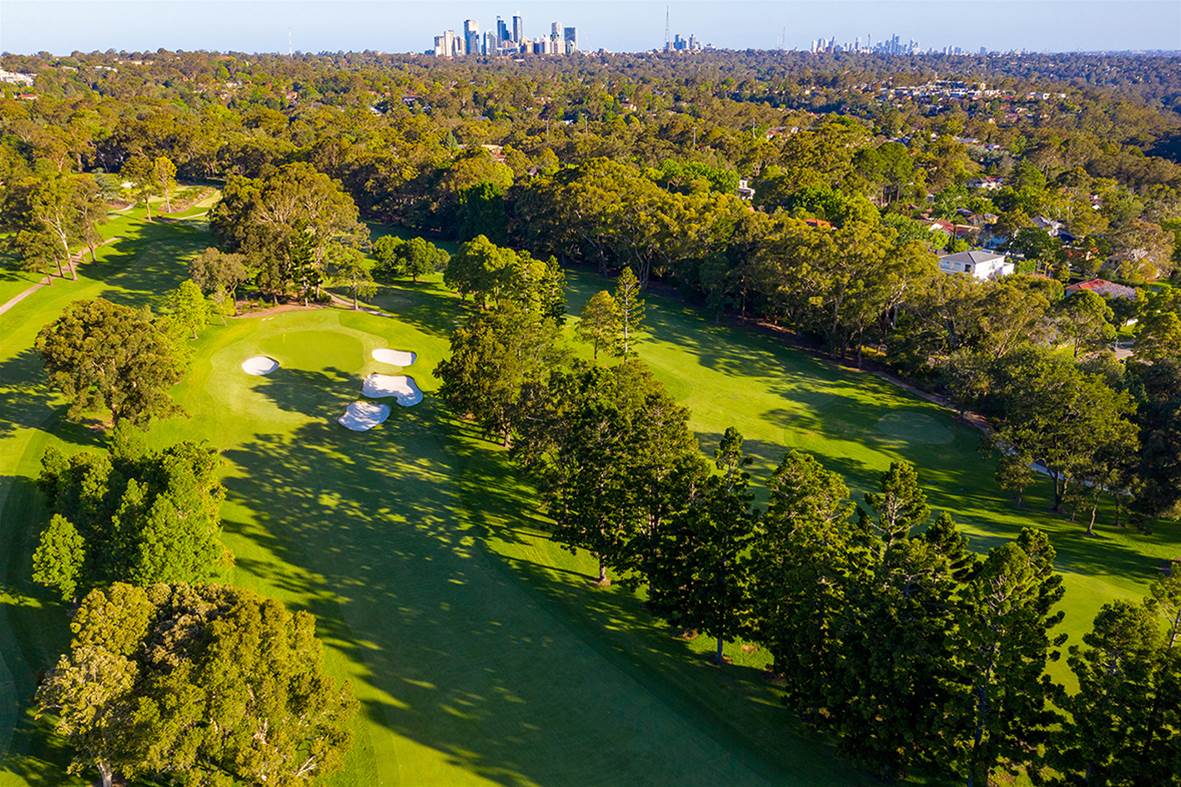
The bunkers had become a significant maintenance and cost issue. Every time the course received heavy rain the sand would wash off the faces and inefficient drainage and clay soils would leave standing water behind taking the bunkers out of play.
It was with these problems in mind that Killara appointed Kruse Golf to fix up the bunkers and re-model all 18 greens. But Kruse saw untapped potential in the property and advocated for a more wholistic solution to fix some routing problems and address the vegetation issues.
With the club’s blessing he went to work reversing two holes, linking fairways, removing more than 300 trees, re-wilding areas and freeing up space to move some greens and tees and create more strategy and interest.
Kruse lives locally and spent an unusual amount of time on site supervising the works and hand shaping contours with rakes and boards. With 30 years’ experience as an associate for prominent design firms including Thomson, Wolveridge & Perrett and Greg Norman Golf Course design, Kruse had worked on more than 25 new courses throughout the Asia Pacific region.
"With the improved flora it is anticipated Killara will also become an even more important habitat for bird, insect and animal fauna to emphasise the role that metropolitan golf courses can serve in maintaining the biodiversity of wildlife in a suburban setting."
With such extensive experience, Killara was hardly taking a chance on selecting Kruse, but as it was to be the first significant project under the banner of his own company – Kruse Golf, he approached the task as if he had everything to prove.
Not settling for just the green re-modelling gig, Kruse set out to elevate every aspect of the property; reducing mown turf in favour of naturalised areas, using them to tie the playing surfaces into the surrounding landscape, improving green-to-tee transitions, hiding paths and structures with strategic landscaping as well as improving sight lines and employing various strategies to visually screen out the surrounding suburb and give the new holes a natural backdrop to create a more immersive golf experience.
The re-wilding of the non-playing surfaces included identifying and propagating plants that are indigenous to this area of Sydney, including species such as Native Bluebell (Wahlenbergia) and grasses such as Microlaena and Brown-top bent.
These choices have resulted in reduced inputs and costs for the greenkeepers freeing them to lavish attention on the playing surfaces while also providing the golfer with interesting texture and colour contrast to break up the otherwise featureless carpet of green turf.
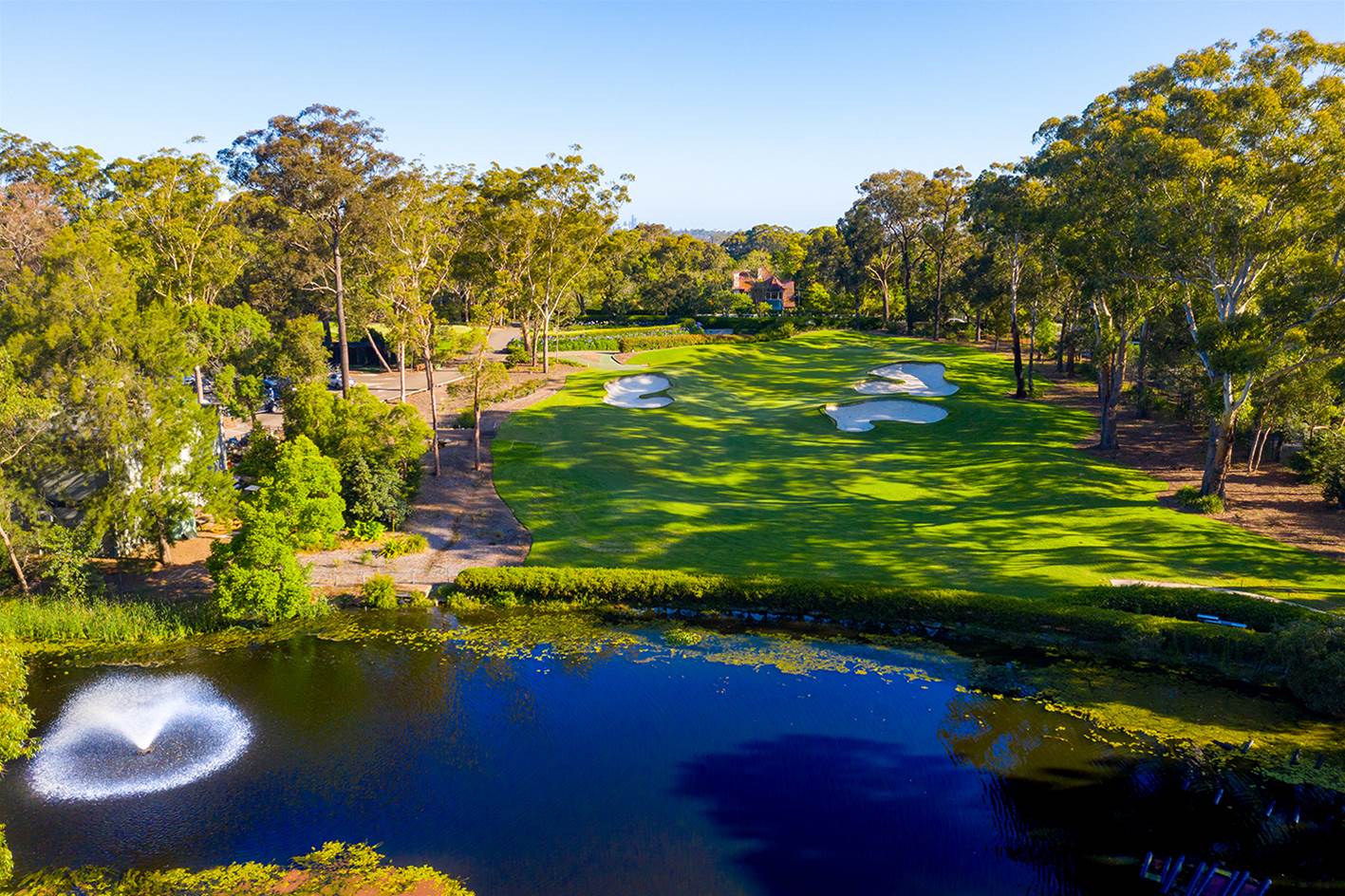
With the improved flora it is anticipated Killara will also become an even more important habitat for bird, insect and animal fauna to emphasise the role that metropolitan golf courses can serve in maintaining the biodiversity of wildlife in a suburban setting.
For the playing surfaces the robust and practical kikuyu was retained for the fairways while the small-leafed Sir Grange zoysia was introduced in the green surrounds and tees to create a firm and fast base on which to encourage the ground game and make use of the subtle feeding and repelling shapes around the new green complexes.
The introduction of zoysia was perhaps the most controversial decision of the renovation as it is unproven as a golf course turf in Sydney’s climate. However, with several seasons of growth and play under its belt it has proven beneficial not just for the aforementioned ground game but also for its similar colour to the new Pure Distinction bentgrass greens. Extending out beyond the greenside bunkers it lends the new green complexes a grander scale while also serving as a barrier to keep poa and kikuyu from invading the pristine new putting surfaces.
All the bunkers at Killara have been replaced and here too the club has shown an appetite for innovation. The landforms are the main feature of Killara so the bunkering of the new design was an exercise in restraint with barely any fairway bunkers and the remaining greenside bunkers placed to be of strategic value while also styled to create a visual illusion of more sand than is actually there.
In addition to using modern capillary liner for drainage the introduction of the EcoBunker product was the key innovation that gives Killara’s bunkers their dramatic look with sand faces and sharply defined dark top lines. EcoBunker is a revetting sod created using artificial turf repurposed from old soccer and tennis courts in the United Kingdom. It is extremely durable and retains its form even after years of use. The EcoBunker edges at Killara have had a season or two to develop some grassy moss and it is virtually impossible to identify the revetting as an artificial product.
Killara is an intriguing layout for being spread out among three “paddocks” separated by suburban roads. “Home” is the main paddock containing the clubhouse, greenkeeping facilities, a dam and six holes including the opening three holes as well as the final two.
Then comes the smallest of the three paddocks – “farm” contains four side-by-side par 4s that zig-zag down a large rectangular slope. One of the best holes on the new course is a product of Kruse’s recommendation to reverse the former 5th hole, which played from the western most tip of the property alongside an overgrown hazard to a raised green that was often in shade. Playing now as the reversed 4th hole it is downhill and shorter than its previous incarnation but while that hole was a tedious uphill slog this new one is all fun with a tee shot into a generous landing area with interesting contours that reward a well-directed tee shot with a better angle into a charming green in front of a backdrop of dark Blue gum forest.
“Bradfield” is Killara’s largest paddock with eight holes from the 9th through to the 16th and the most varied terrain. The previous par-3 11th was a weak hole and its removal made space for the par-5 10th green to dominate the beautiful clearing at one of the highest points of the course and a much more interesting par-3 14th was found in the bowl of land behind the 13th green.
Throughout the three paddocks there is a new feeling of width and scale that is all tied together with attention to detail and consistent theming in every aspect of the presentation.
Such grand features on a small property like Killara might have resulted in an uncomfortable, cramped look. But as with a portly gentleman in a too-tight suit, the hand of a skilled tailor was needed to let out the seams in just the right places. The course has been given a more flattering profile and a richly toned golf experience that highlights the dramatic landforms of the North Shore’s golf terrain in a sustainable setting of indigenous woodland that redefines what it means to be a Sydney parkland course.
 FACT FILE
FACT FILE
LOCATION: Pacific Highway, Killara, NSW, 2071.
CONTACT: (03) 9498 2700 (clubhouse).
WEBSITE: www.kgc.com.au
DESIGNERS: Prosper Ellis (1965); Harley Kruse (2019).
COURSE SUPERINTENDENT: Ryan Fury.
PGA PROFESSIONALS: Greg Hohnen, Patrick Fairweather.
PLAYING SURFACES: Kikuyu (fairways), Sir Grange zoysia (greens surrounds and tees), Pure Distinction bentgrass (greens).
VISITING GOLFERS: Killara is a private club but interstate and overseas visitors can contact the club regarding tee times. MEMBERSHIP: Killara offers membership options to suit all golfers as well as those interested in a non-playing membership.
ACCOLADES: Debuted at No.85 in Golf Australia magazine’s Top-100 Courses for 2022.
Related Articles

Review: Omaha Beach Golf Club

Drinks With... Ricky Ponting

